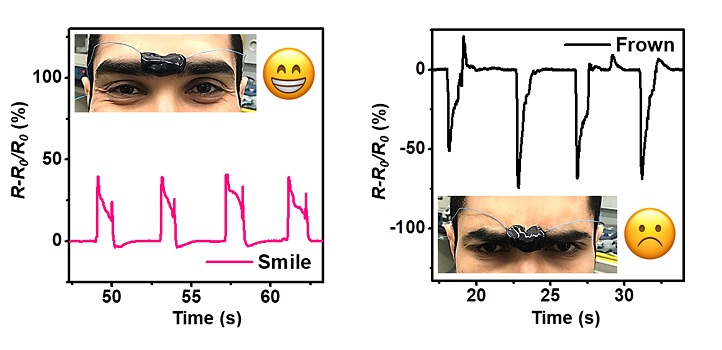Material Science and Engineering
Electronic skin stretched to new limits
A metal carbide within a hydrogel composite senses, stretches and heals like human skin for use in medicine and robotics.

An electrically conductive hydrogel that takes stretchability, self-healing and strain sensitivity to new limits has been developed at KAUST. “Our material outperforms all previously reported hydrogels and introduces new functionalities,” says Husam Alshareef, professor of materials science and engineering.
Smart materials that flex, sense and stretch like skin have many applications in which they interact with the human body. Possibilities range from biodegradable patches that help wounds heal to wearable electronics and touch-sensitive robotic devices.
The material is a composite of the water-containing hydrogel and a metal-carbide compound known as MXene. As well as being able to stretch by more than 3400 percent, the material can quickly return to its original form and will adhere to many surfaces, including skin. When cut into pieces, it can quickly mend itself upon reattachment.
“The material’s differing sensitivity to stretch and compression is a breakthrough discovery that adds a new dimension to the sensing capability of hydrogels,” says first author, Yizhou Zhang, a postdoc in Alshareef’s lab.
This electrically conductive hydrogel can stretch and reshape. It has the skin-like quality of sensitivity to touch.
© 2018 KAUST
This new dimension may be crucial in applications that sense changes in the skin and convert them into electronic signals. A thin slab of the material attached to a user’s forehead, for example, can distinguish between different facial expressions, such as a smile or a frown. This ability could allow patients with extreme paralysis to control electronic equipment and communicate.
Strips of the material attached to the throat have impressive abilities to convert speech into electronic signals. This might allow people with speech difficulties to be clearly heard.
“There is real potential for our material in various biosensing and biomedical applications,” says co-author Kanghyuck Lee.

Signals from the electrically conductive hydrogel can clearly distinguish between different facial expressions.
© 2018 KAUST
More straightforward and extremely useful medical possibilities include flexible wound coverings that can release drugs to promote healing. These could be applied internally on diseased organs in addition to adhering externally to skin. The team also envisions developing a smart material that could monitor the volume and shape of an organ and vary drug release according to signals produced.
An ideal potential would be to combine both medical sensing and therapy. Other exciting possibilities lie in robotics, where the material could serve in touch-sensitive finger-like extensions for machinery, for example.
There are also anticounterfeiting possibilities, with slabs of the material and integrated electronics proving highly sensitive at detecting signatures as they are written.
The KAUST team has a long list of possible applications that can now be further explored and developed. “There is great potential for commercialization,” Alshareef concludes.
References
- Zhang, Y., Lee, K., Anjum, D.H., Sougrat, R., Jiang, Q. Kim, H. & Alshareef, H.N. MXenes stretch hydrogel sensor performance to new limits: hydrogels sense and heal better with MXene. Science Advances 4, eaat0098 (2018).| article
You might also like

Applied Physics
A single additive enables long-life, high-voltage sodium batteries

Bioengineering
Smart patch detects allergies before symptoms strike

Applied Physics
Two-dimensional altermagnets could power waste heat recovery

Applied Physics
Interface engineering unlocks efficient, stable solar cells

Applied Physics
The right salt supercharges battery lifespan

Applied Physics
Light-powered ‘smart vision’ memories take a leap forward

Applied Physics
Natural polymer boosts solar cells

Material Science and Engineering




